Substack tells me this post is too long for email as there are a lot of photos. To see the whole thing just press VIEW ENTIRE MESSAGE at the end of the email and you’ll see it in one. Or head to the online version.
Thursday 13th March 2025, the day before Holi, and Jodhpur was bathed in an aura of anticipation. Wandering through the early morning streets of the Sri Ganganagar neighbourhood, it seemed to me that the inhabitants were going about their business with a quiet but purposeful energy. Holi was near, and preparations for Holika Dahan - the ritual burning of a symbolic pyre on the eve of Holi - were already shaping the day.
Holika Dahan marks the beginning of the two-day Holi festival, and its roots lie in an ancient story of good triumphing over evil. It’s named after Holika, a figure from Hindu mythology, who was consumed by fire while trying to harm her virtuous nephew, Prahlad. The fire symbolises the burning away of negativity and the victory of faith, integrity, and light.
At a street corner, women in bright saris and family groups were selling offerings for the traditional fires to be lit that evening: discs of dried dung, twisted branches—likely from neem or peepal trees, both sacred in Hindu tradition—and sheafs of fresh green barley. Barley is traditionally offered into the Holika fire—a symbol of fertility, growth, and the hope of a good harvest.
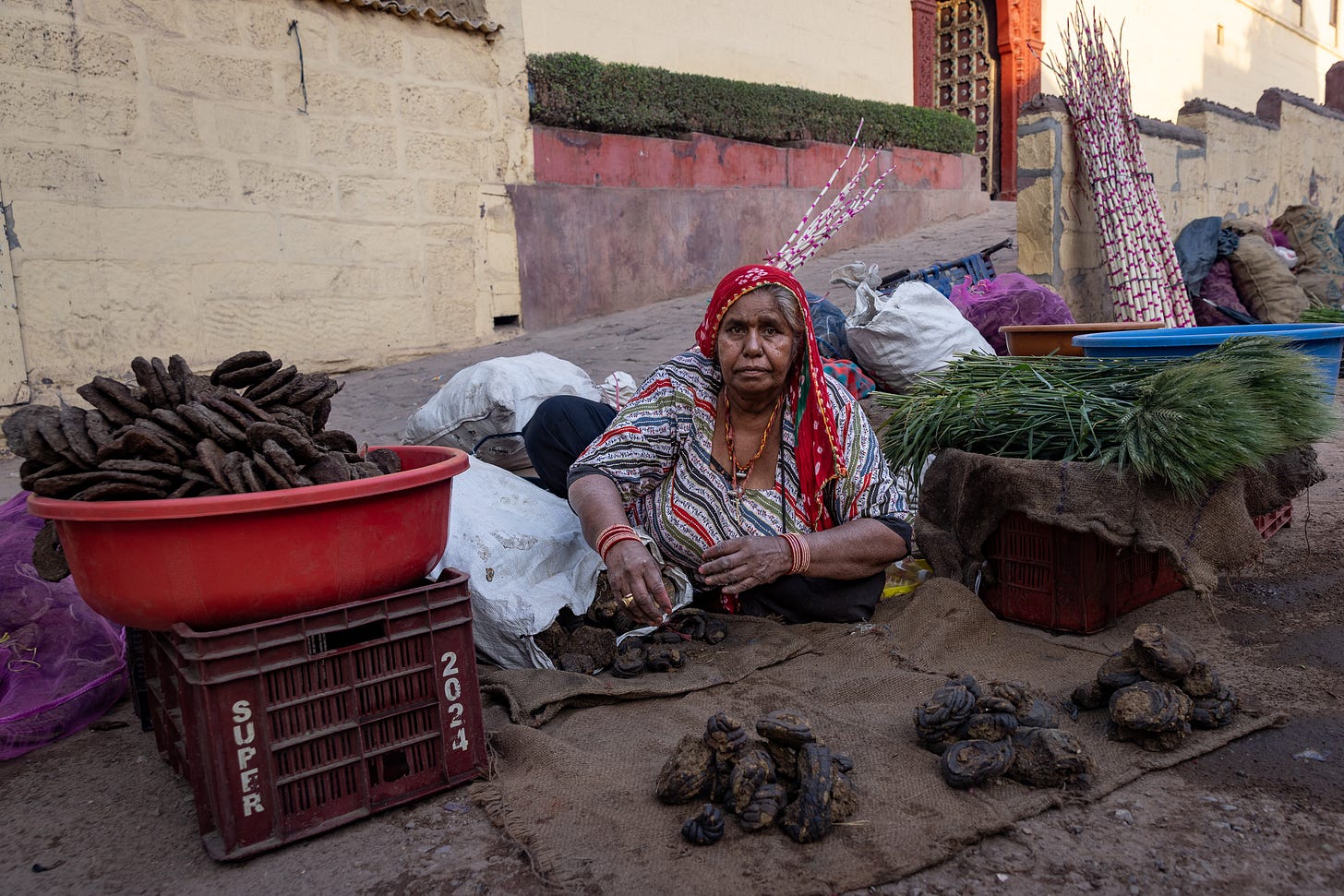

Further along, stalls selling gulal—the vivid powdered pigment that defines Holi— their offerings spread out like a rainbow spilled across cloth. Heaps of pink, yellow, green, blue, orange and red piled high, catching the light. The vendors were becoming dusted in stray colour as they filled bags for customers. You could feel a shift beginning—an ordinary day blending into something more.
That evening, we had been invited to join a small, local Holika Dahan celebration - not a grand public gathering, but something more intimate and rooted in the neighbourhood close to our hotel. It was to be a late event as this festival always falls on the exact timing of the full moon of Phalguna, marking the end of winter and the promise of spring. In Hindu tradition, the full moon is charged with significance, believed to amplify spiritual energy. When the time came, a group of men arrived at our hotel, carrying large daf drums. As they played, the beat rising and falling like a pulse, they were watched by a small group of elders seated to the side of the proceedings.
The drumming and shouts of the men echoed in the street as we processed to a small open space, where several lanes converged, to find a pyre had been carefully assembled there. It was a modest pile, but its presence filled the space. There was drumming and shouting while the eldest member of the gathering or a priest recited blessings and prepared the flames. Off to the sides, women stood in the shadows, some with children held in their arms or beside them.
As the flames were lit at the precise moment of the full moon, offerings were passed forward including sheafs of tender green barley. One by one, they were fed into the fire. The barley curled and blackened in the heat, a prayer to the land and a hope for the coming harvest. We all had a smudge of colour smeared on our foreheads as a mark of greeting. As the flames took hold and rose, a long, central branch was grabbed and pulled round and round rotating the fire within a circle that had been marked on the ground. As the fire died, men holding small children who were celebrating their first holika walked clockwise around the embers, followed by the women and girls.
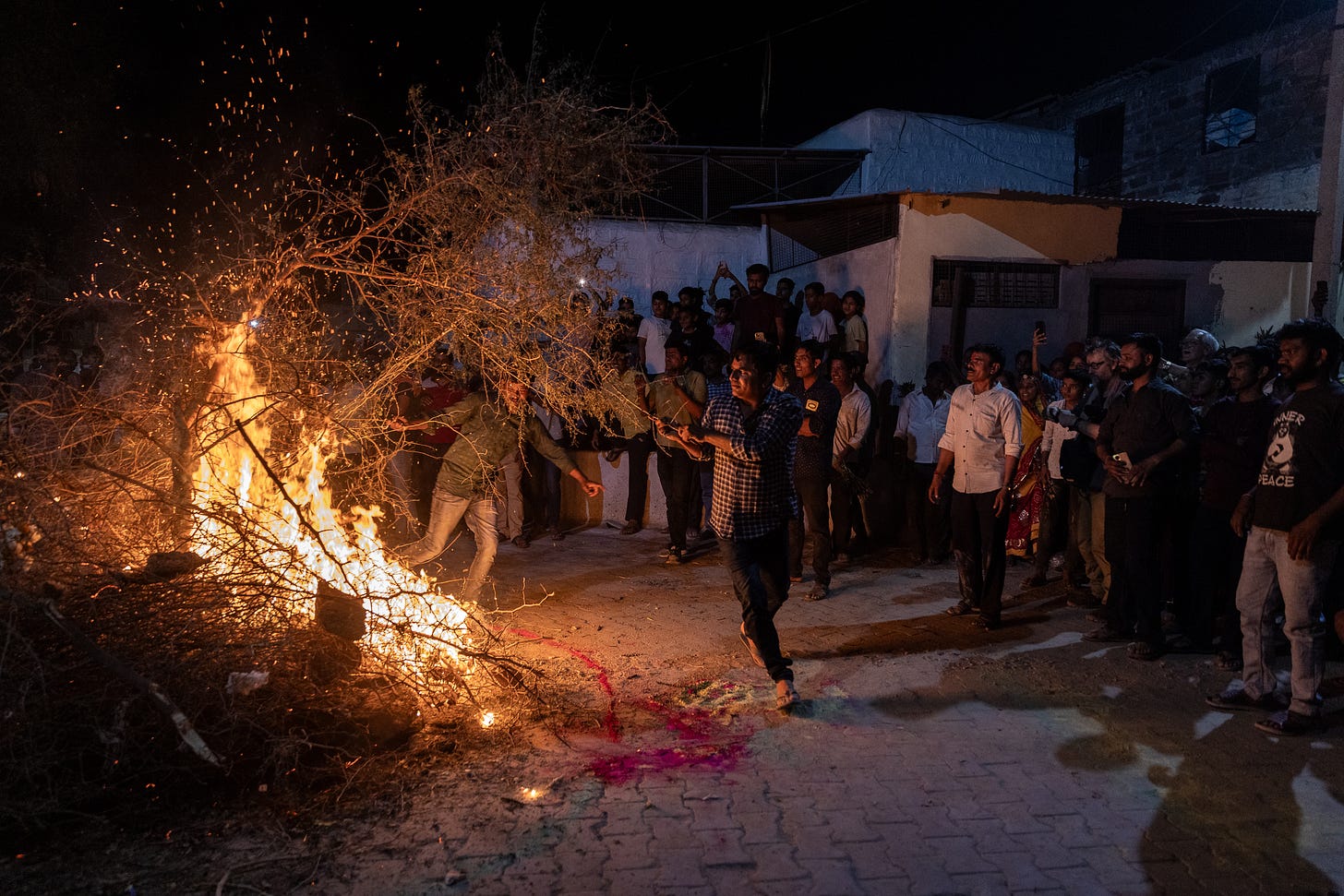
That was the only fire we saw - but it felt like we were observing and participating in something timeless. There was no fanfare, no large spectacle. Just tradition, rhythm, firelight, and the full moon overhead.
And then came morning.
We dressed in our white kurtas and trousers and, before heading out into the streets of Jodhpur, smeared each other’s faces with gulal. It was all very civilised; that didn’t last long. As we walked out to our minibus, we were immediately targeted by a group of children who gleefully added to our colour palette as well as taking a few pot shots at us with their water pistols. It certainly set the scene for what was to come.
Holi is full of joyful chaos - the streets were alive with laughter, music, an explosion of colour, and awash with water in places. And we stepped out into the middle of it. There wasn’t so much of the powder being thrown about, as I had imagined would be the way, but a respectful smearing of each cheek with pink, green, blue or yellow powder with the greeting “Happy Holi!”. Initially. That changed a bit as the day wore on and libations were taken; the energy and noise levels rose over the hours. The respect was still there but more copious amounts of powder were applied to face and head (I’m not particularly tall so had the ignominy of the powder being rubbed into my hair too). As my face colour went from red to green to yellow and everything in between, I felt like a walking, talking kaleidoscope. My white kurta became something akin to Joseph’s technicolour dream coat.


What struck me wasn’t just the colour and noise - although that was everywhere - but the choreography of closeness and distance. I was very aware as we moved through the streets that the men and women, for the most part, were celebrating in parallel.
In one street, women dressed in red saris danced in two long lines, moving towards each other and then apart, a sort of Rajasthani version of the hokey cokey. With each pass, they tried to pull out a woman from the opposite line, laughter erupting as they succeeded.
Red was the predominant colour worn by the women. In the cacophony of Holi’s colours, red holds its own: the colour of love, of fertility, of sacred rites and Shakti - divine feminine energy. It marks marriage, power, and beginnings. Each sari was as if a thread running through the streets forming a tapestry of celebration and strength.
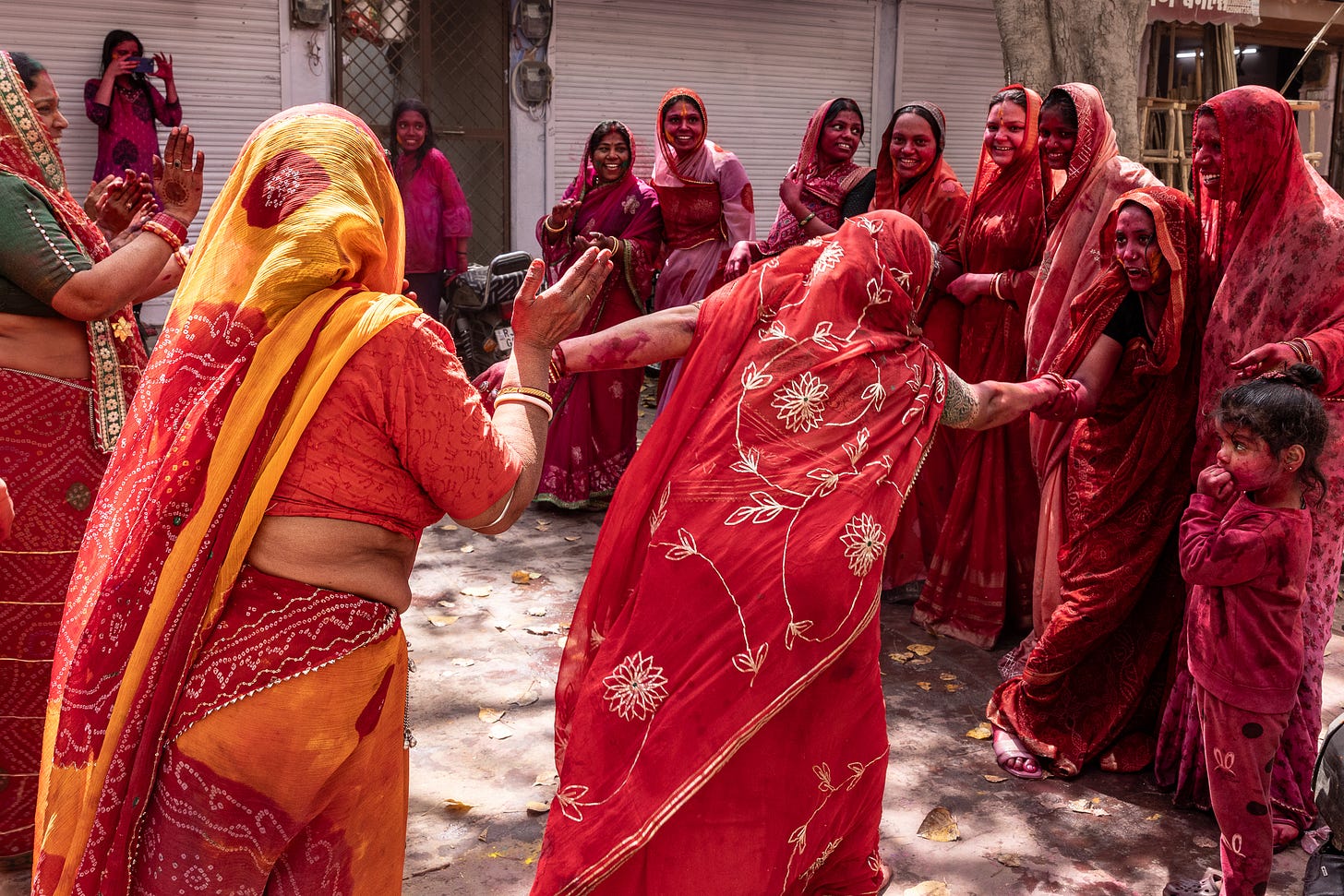

Across the road, another group sat on stone steps, banging out rhythms on a daf drum and singing, their beat guiding the celebrations like a pulse. The men, meanwhile, gathered nearby—louder, looser, fuelled by rum; a pulsating mass of sound, sweat and celebration. Yet the boundary between them was porous. A man would join the women with a drum, powder and laughter would drift across the divide. It didn’t feel quite a full separation, but a rhythm established over aeons - each group danced to the same music, just in their own time and space.

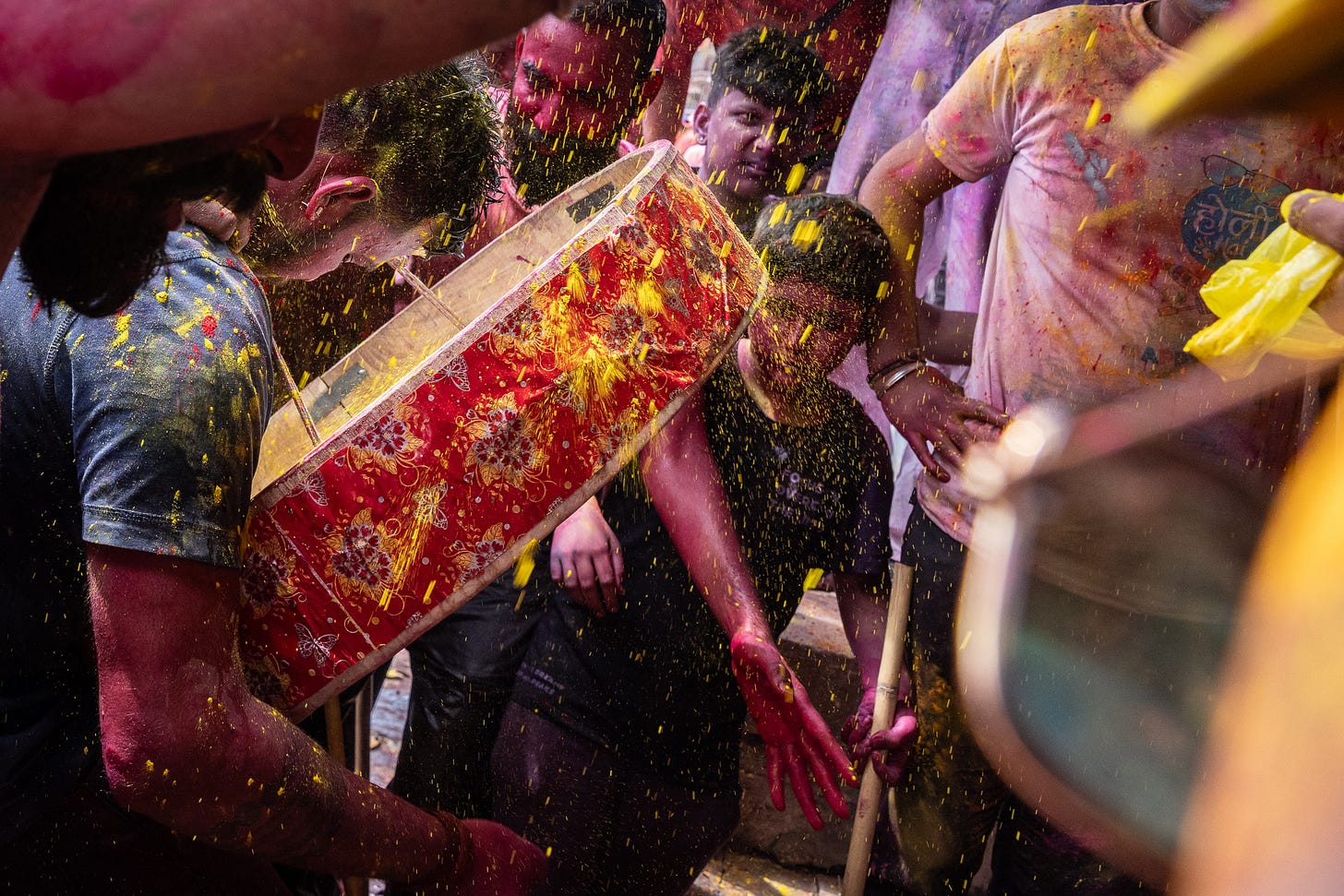
Holi, like all festivals of renewal, is about shedding the old, stepping into light, and celebrating what it means to be human - messy, joyful, colourful, connected. In Jodhpur, it was all of that and more.
Namaste
A couple of the tour leaders are here on Substack, if you’d like to check them out. Shivam of Kolkata Photo Tours
and Neale James of The Photowalk Podcast.
They’re teaming up again in March 2026 to put on a Photowalk adventure to Kolkata and Varanasi.








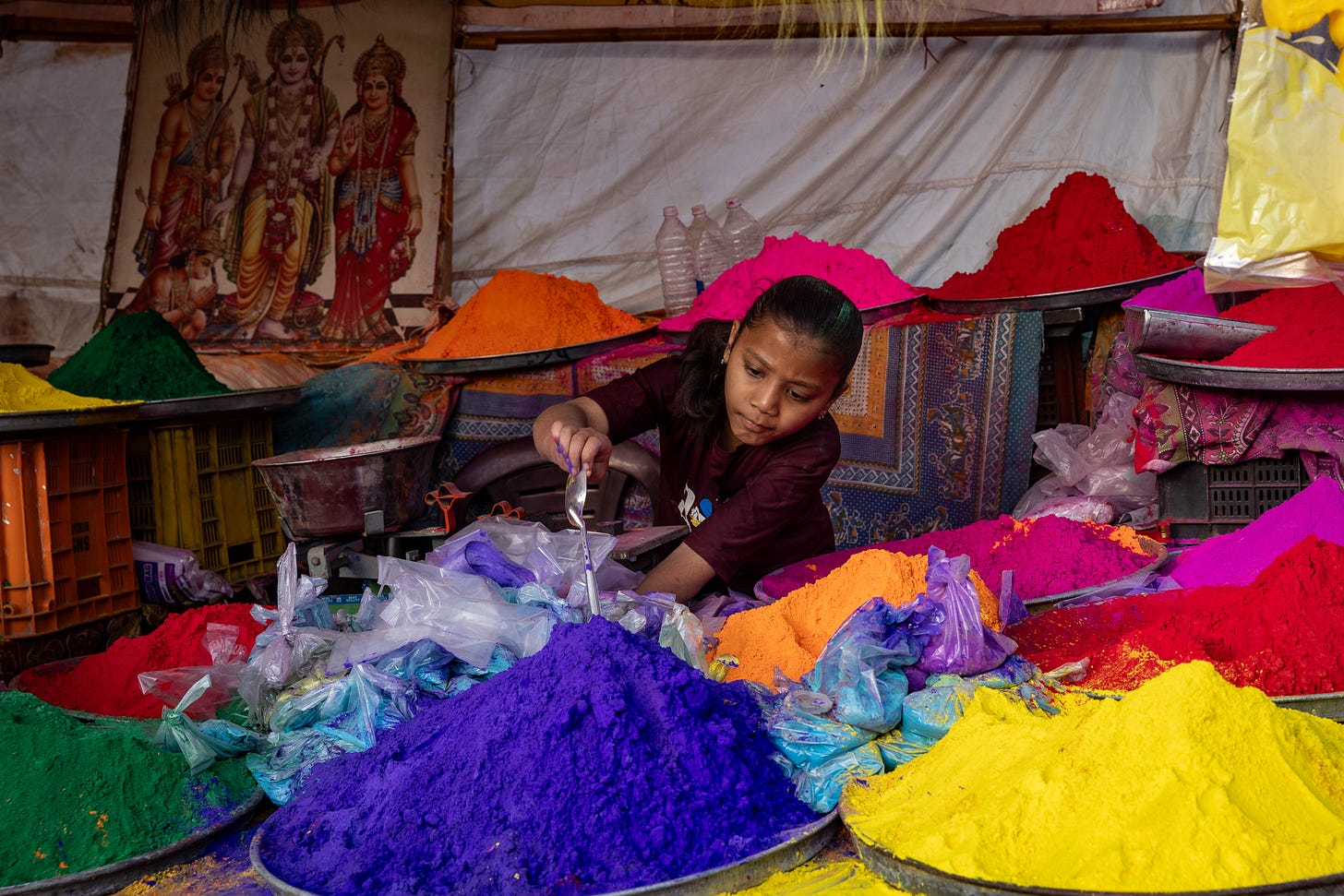
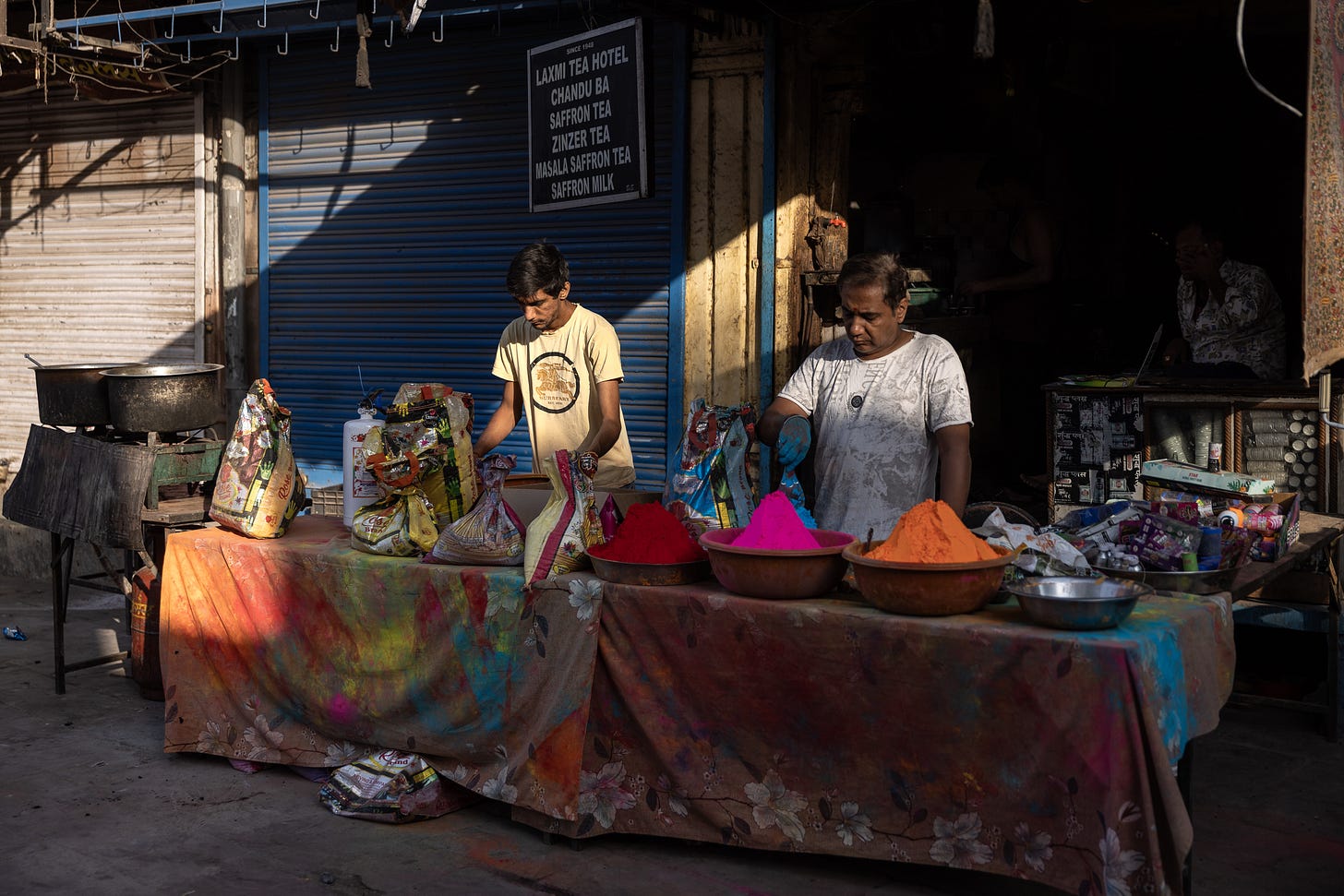

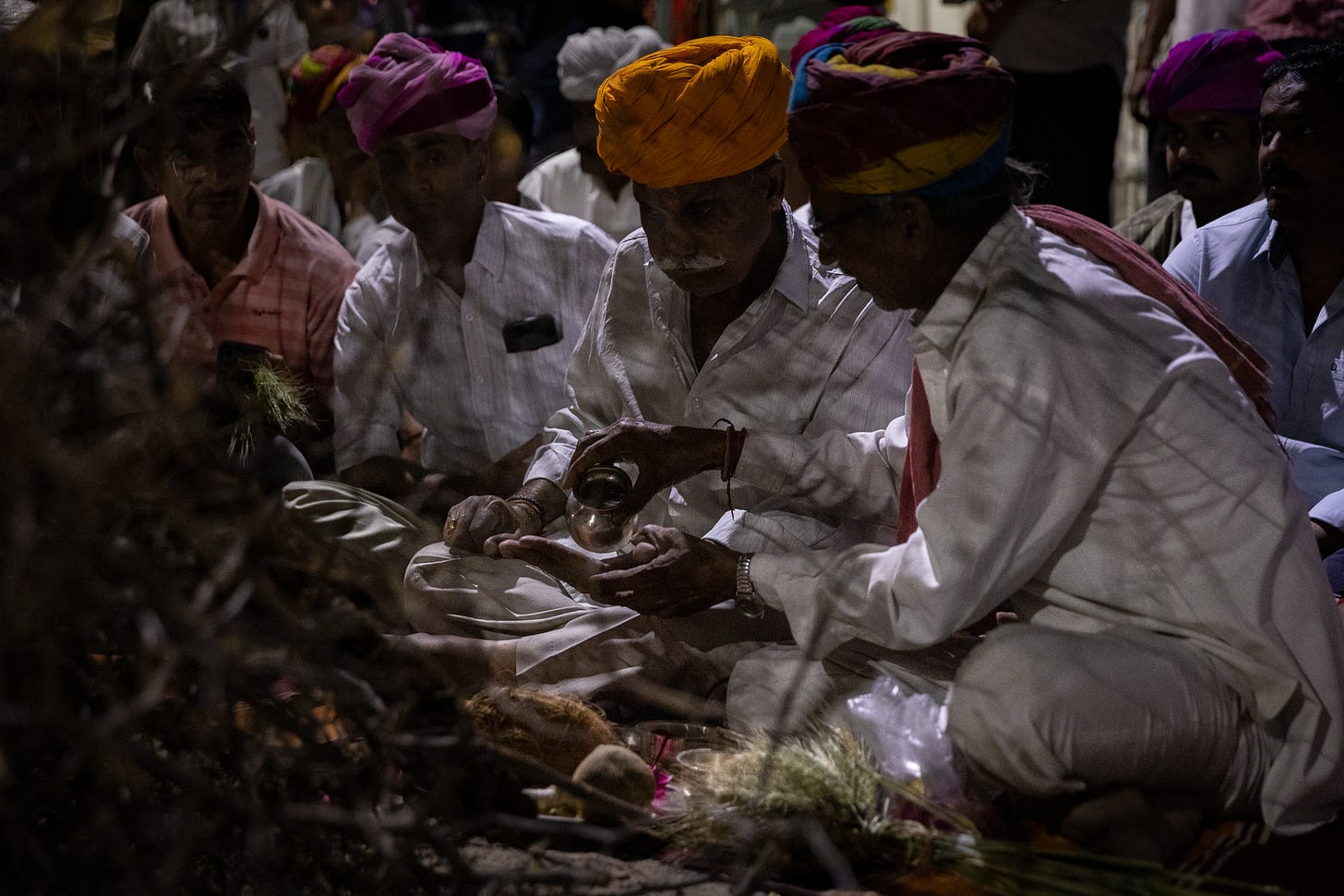
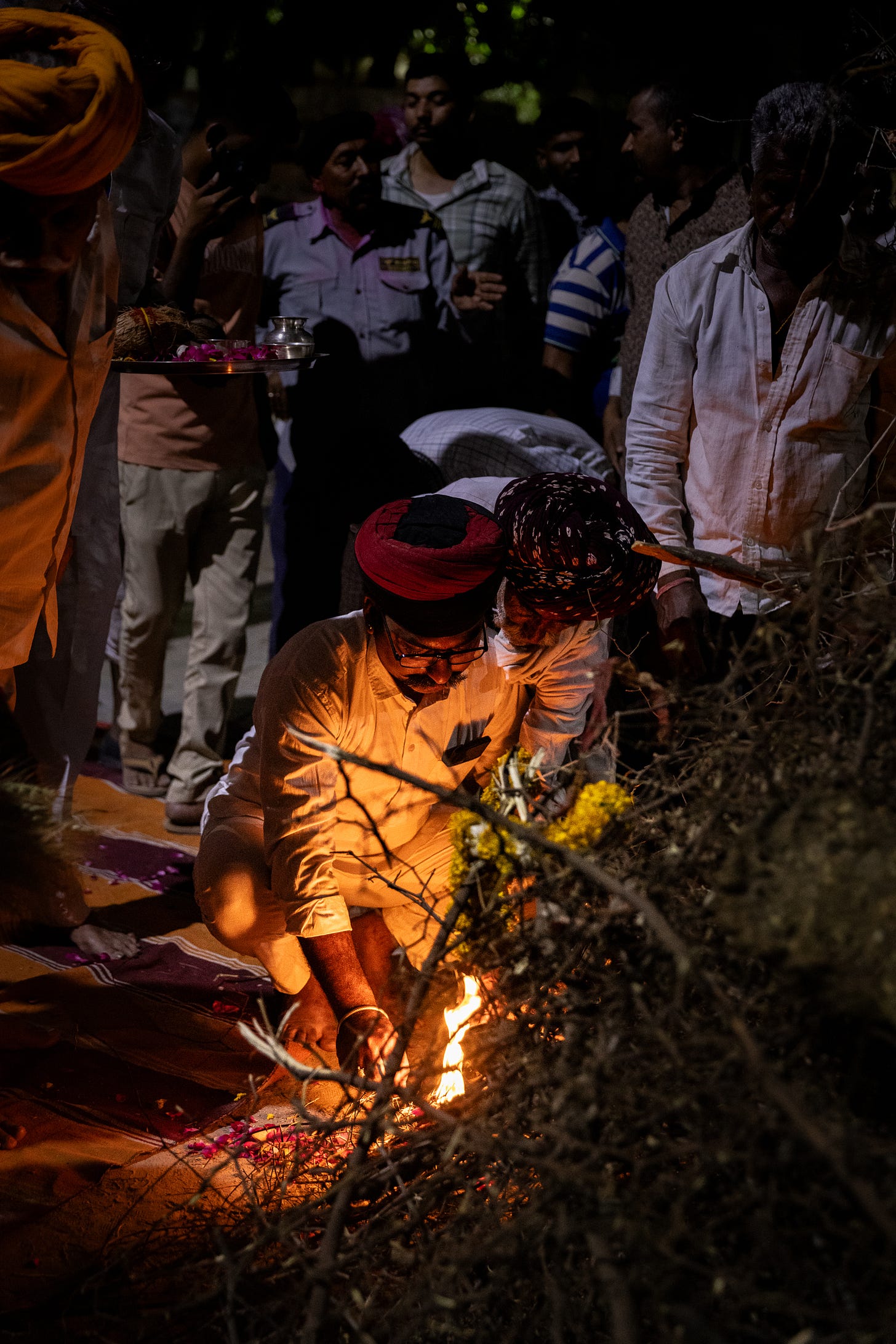

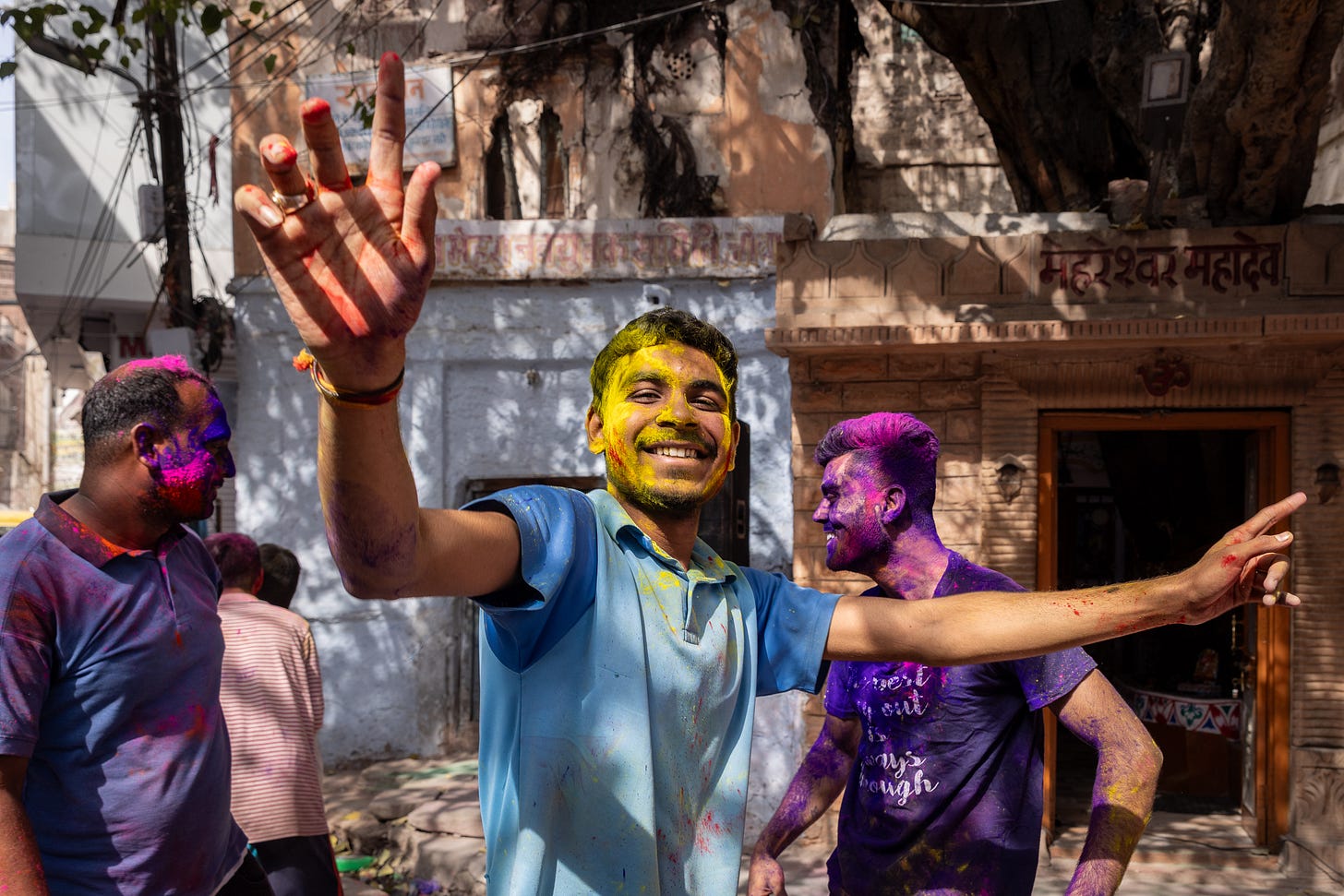
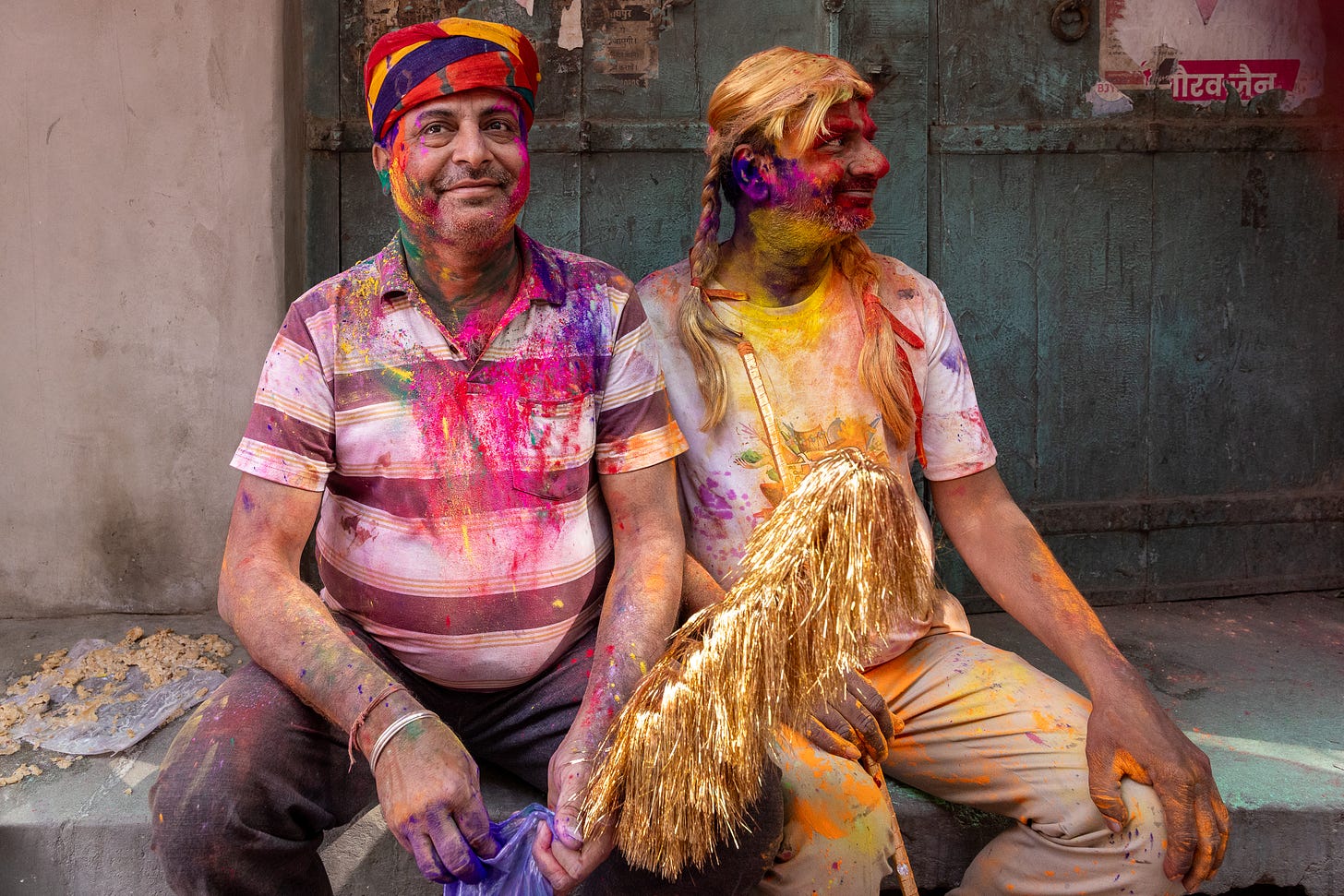

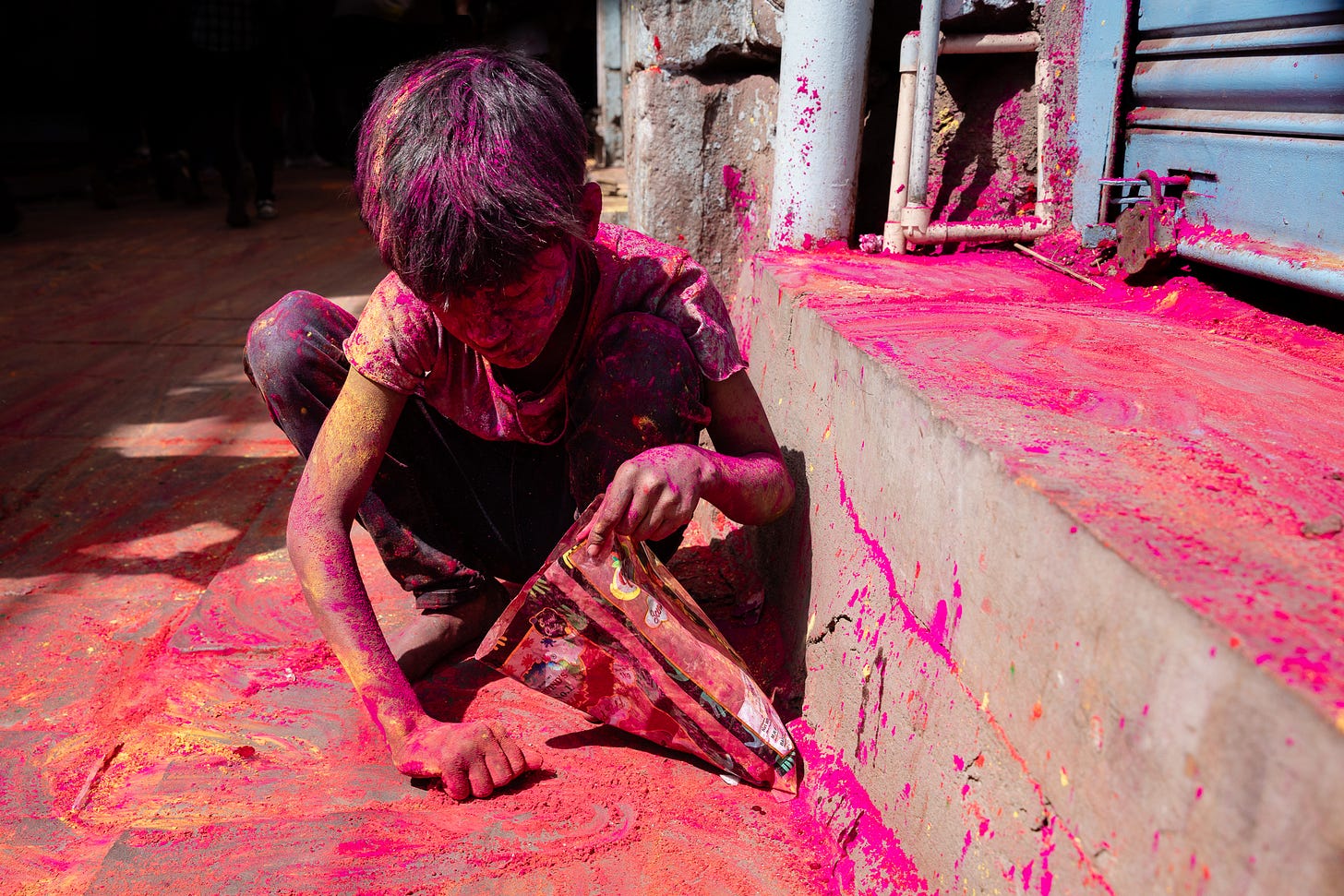
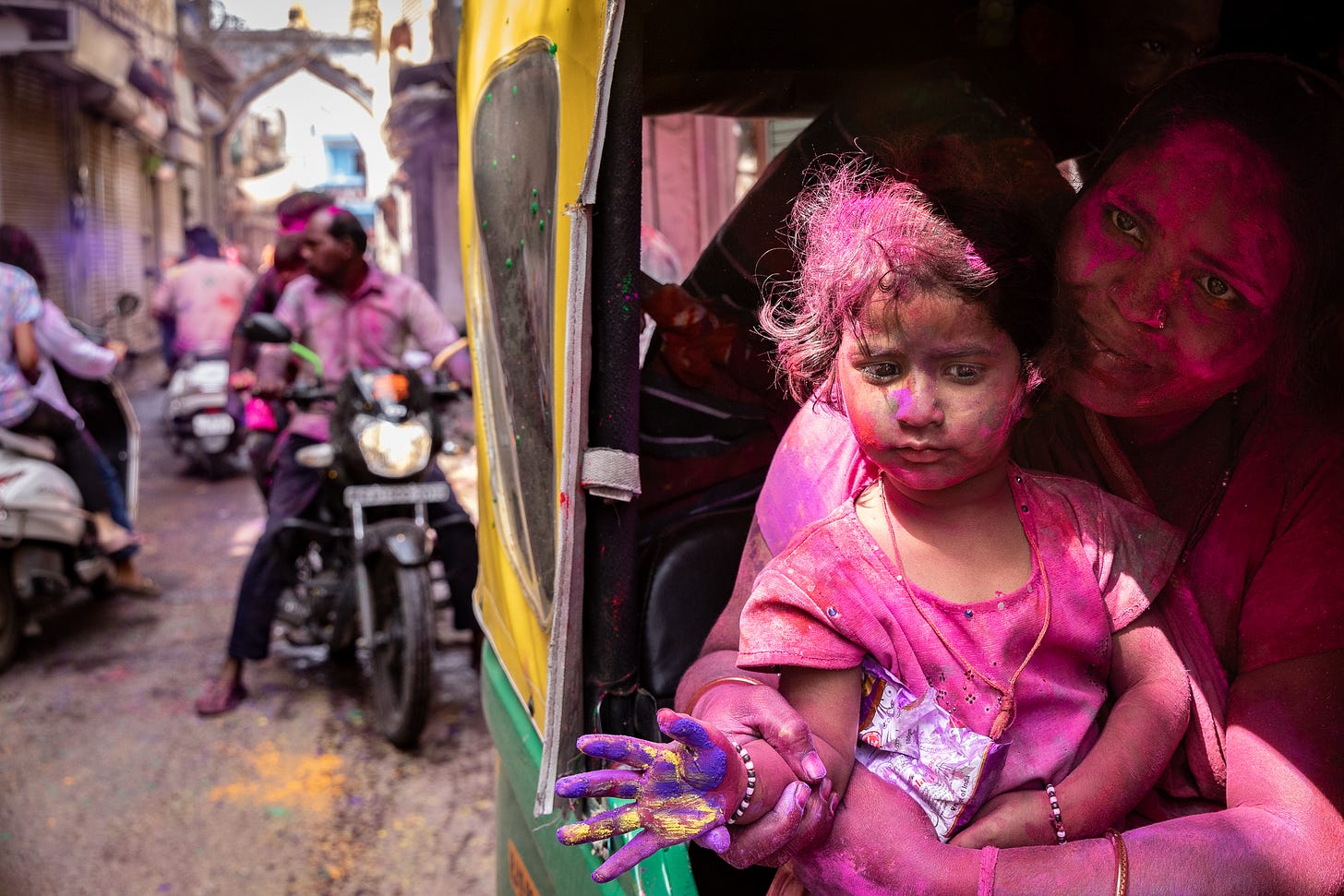
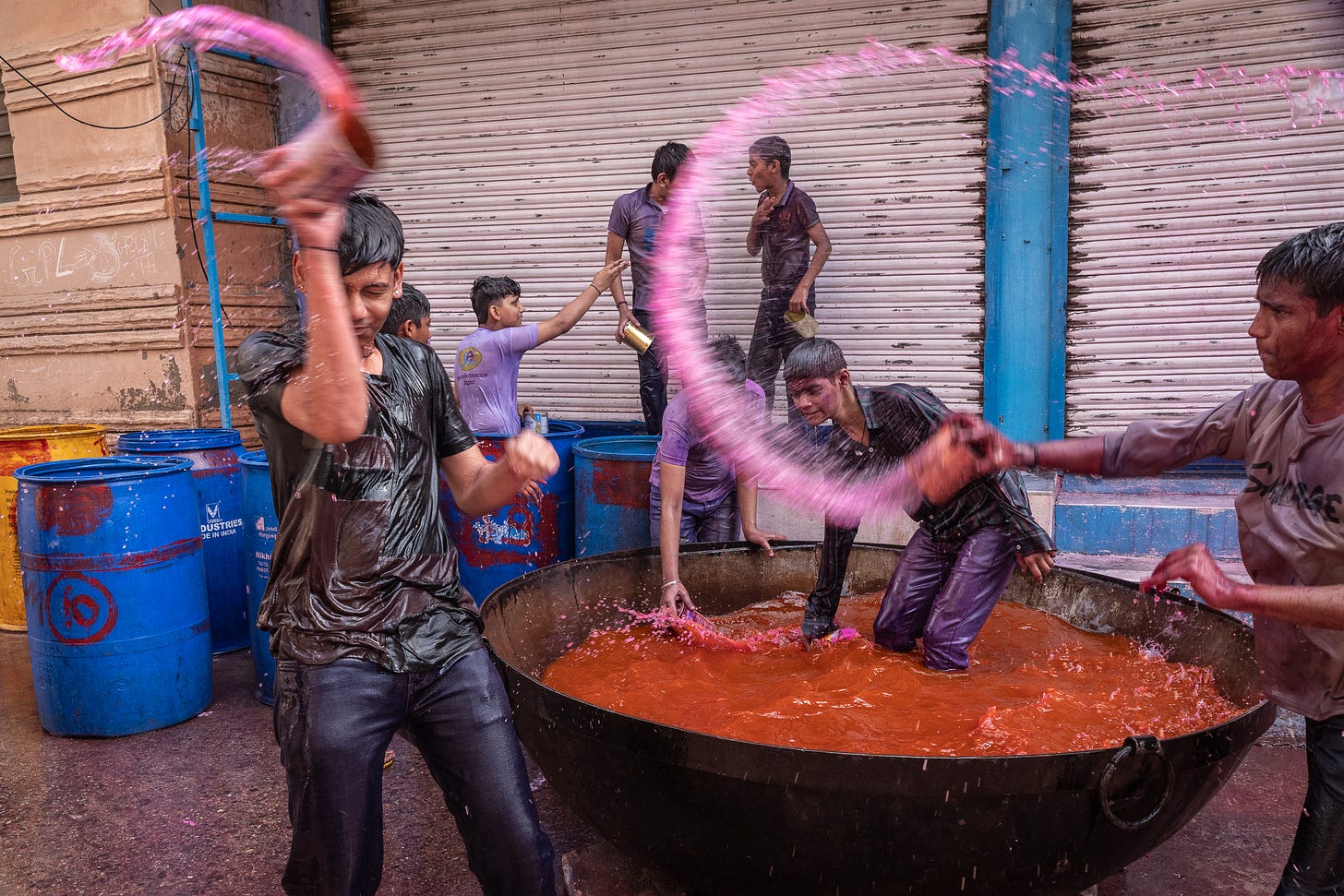
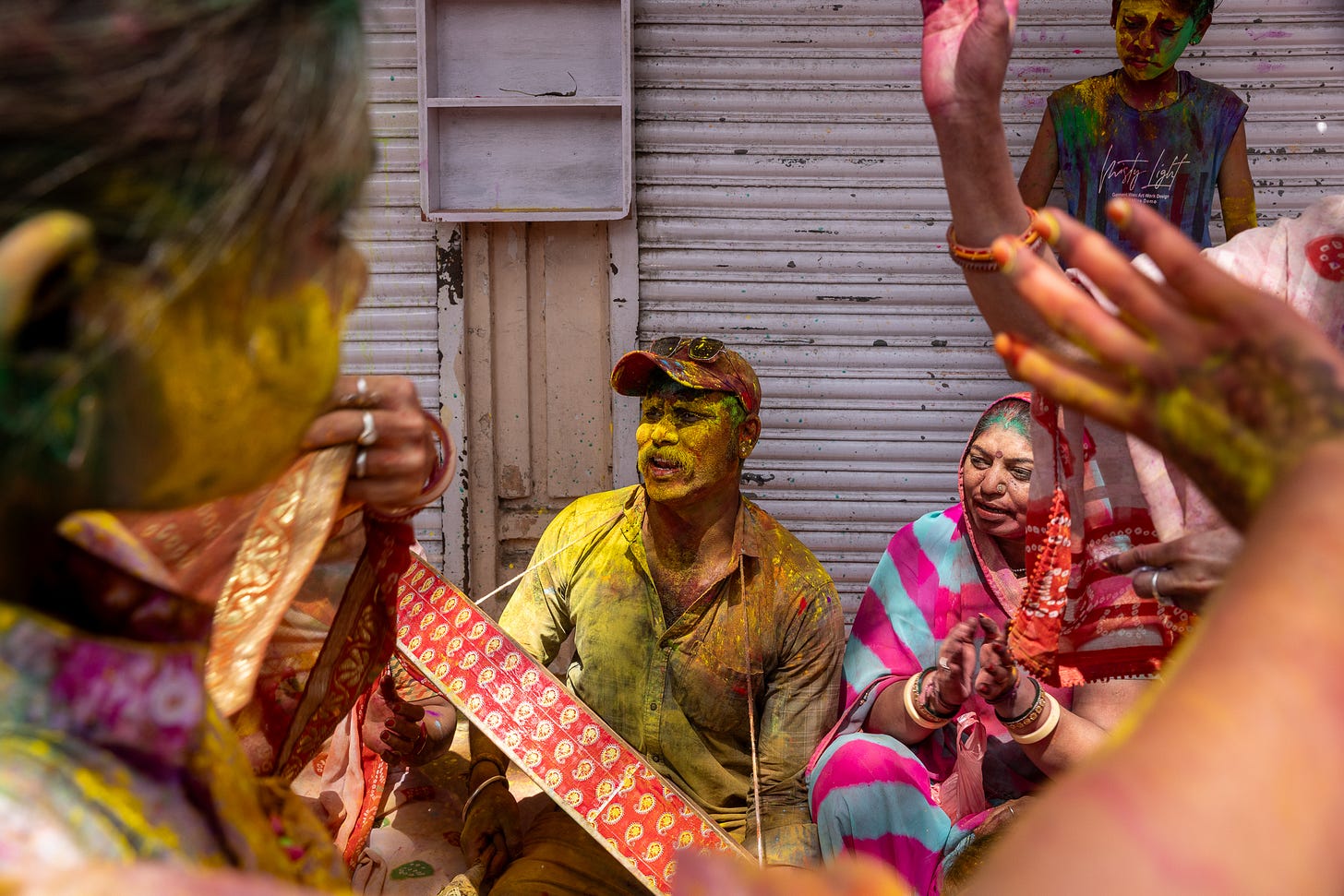


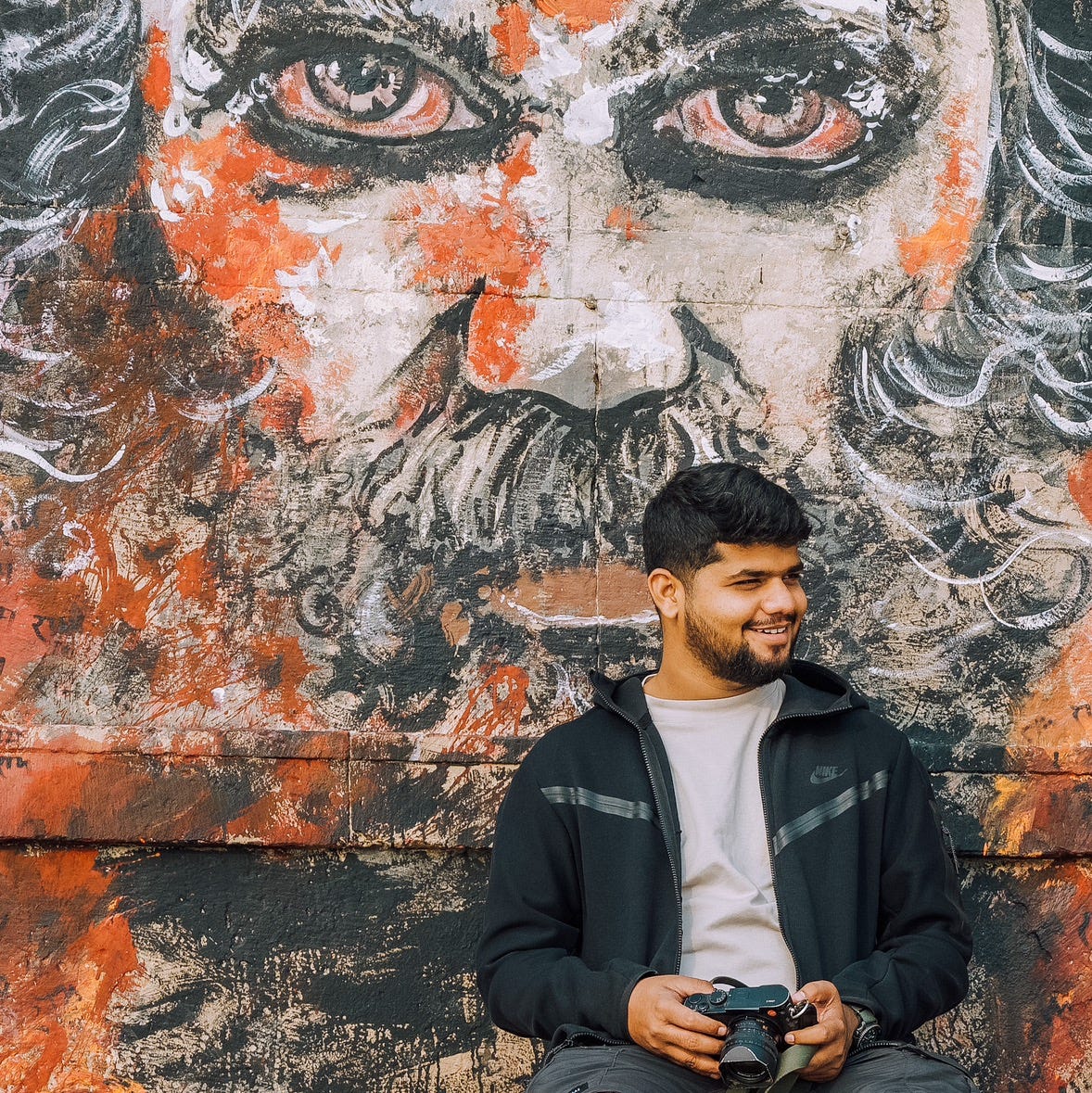


Great account of Holi Lynn. Lots of detail and of course, your photos are magical. I felt I was right there in the middle of it with you. Oh, wait! I was!!! But your eyes saw things I didn’t. Thanks for sharing xx
Wow Lynn!! What a fabulously myriad experience of colour and tradition and belief! Your photographs, as always, are spellbinding! I couldn't resist checking the website for the next photo trip to Varanasi... sadly way over my budget but I hope you go! x